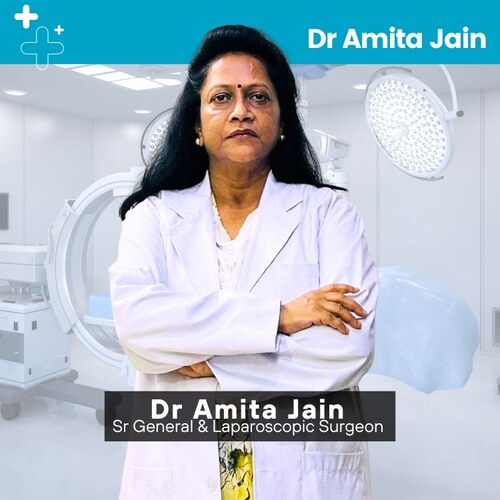In today’s health-conscious world, where individuals prioritize their well-being like never before, the field of medicine has witnessed remarkable advancements. One such life-changing procedure is skin grafting. This surgical technique holds the potential to transform the lives of countless patients, offering hope and healing for those facing skin injuries, burns, or congenital conditions. India’s leading surgeon for skin grafting Dr Amita Jain delves deep into the topic.
What is skin grafting?
It is a surgical method of transplanting a piece of healthy skin from one part of the body (the donor site) to cover a damaged or surgically removed area (the recipient site).
Purpose
Skin grafts treat deep burns, remove lesions from skin disease, cover large wounds, heal stubborn sores like bedsores, or skin ulcers, and treat skin cancer. It helps to promote wound healing, reduce pain, prevent infection, and improve the cosmetic appearance of the affected area.
Choosing the right donor
Successful skin grafting requires careful donor site selection based on recipient site type and appearance. A compatible match and sufficient blood supply are crucial. Hair-bearing skin should not be placed on hairless areas, and unwanted hair can be removed after graft healing. Common donor sites include the thigh, buttocks, or upper arm, while specific cases may utilize the forehead, neck, groin, or periauricular/supraclavicular skin.
What are the types of skin grafts?
Based on the origin:
· Autograft: Skin is taken from your own body and transplanted to another area.
· Allograft: Skin from a donor (usually a cadaver) used temporarily to cover wounds.
· Xenograft: Skin from animals (like pigs) used temporarily for wound coverage.
· Synthetic skin substitutes including epidermal, dermal, and dermoepidermal (artificial skin) varieties, mimic real skin and are manufactured as substitutes for damaged skin.
Autografts are permanent, whereas allografts and xenografts offer temporary relief. Synthetic skin substitutes can be either naturally absorbed by the host or rejected due to the host’s immune system response.
Skin Draft Surgery Types
· A split-thickness skin graft, known as STSG, involves taking healthy skin from areas like the thigh, buttocks, abdomen, or back and grafting it onto the top layer of skin and a portion of the second layer (dermis). These grafts can vary in thickness and typically require 1-2 weeks for the donor site to heal.
· A full-thickness skin graft, or FTSG, replaces both the epidermis and dermis with healthy skin, usually sourced from uncovered areas such as the groin, arm, or collarbone. This method involves making an incision through subcutaneous tissue to obtain a skin wedge, with immediate closure of the donor wound using sutures.
· A composite graft is employed when the donor site has lost underlying bone or muscle, and it typically involves using skin or cartilage for transplantation. This technique is particularly useful for reconstructing areas like the nose, fingertips, and ears.
Pre-surgery Precautions
Before surgery, patients must stop specific medications, quit smoking weeks in advance, and refrain from eating or drinking after midnight to reduce complications. Consultations also address matching donor and graft site skin tone and texture.
On the Day of Surgery
Surgery is performed when patients are under local or general anesthesia. A scalpel or dermatome is used to extract healthy skin from a donor area, customizing graft size and depth for the recipient site.
Post Surgery
After surgery, patients should stay in the hospital for about two weeks. They must follow post-operative care instructions, like regular dressing of the wound, taking medications for pain management, and avoiding physical activity for quick healing. In case of any complication like injury to the graft site or blood circulation problem, please contact your doctor immediately.
As medical technology continues to advance, skin grafting remains a cornerstone in the field of reconstructive and regenerative medicine.

Dr Amita Jain is one of India’s most distinguished and experienced female surgeons, known for her unmatched expertise in general and laparoscopic surgery. With over 29 years of surgical excellence, Dr Amita Jain has built a reputation for precision, compassionate care, and advanced surgical techniques.
Dr Amita Jain has successfully performed a wide range of complex general surgeries, including both open and minimally invasive procedures, with a strong focus on trauma care, onco-surgical techniques, and reconstructive surgeries. Her areas of specialisation include (including Gallbladder stone removal, appendix removal, hernia repair surgery, piles and fissure surgeries). She was the Professor of Surgery at the Army College of Medical Sciences and Base Hospital, Delhi Cantt. In 1994, she was commissioned asa Surgeon under the United Nations Mission in Congo. From 2020 to 2022, she worked with Bansals Hospital. Currently, Dr Amita Jain is the Senior General and Laparoscopic Surgeon at Rainbow Children Hospitals (Malviya Nagar, Delhi), Artemis Lite: Multi-Speciality Care Hospital (New Friends Colony, New Delhi) and at Rosewalk – Luxury Maternity Hospital in Delhi (Panchsheel Park, Delhi)
Call Us at +(91) 882-6615301

